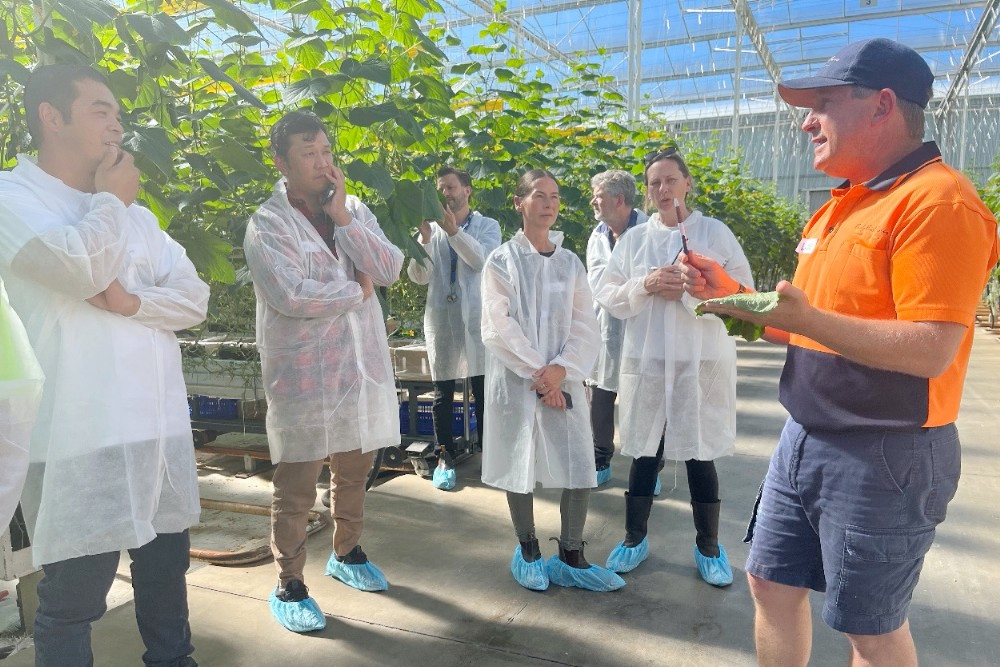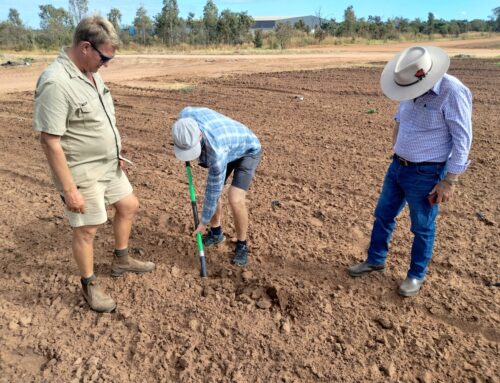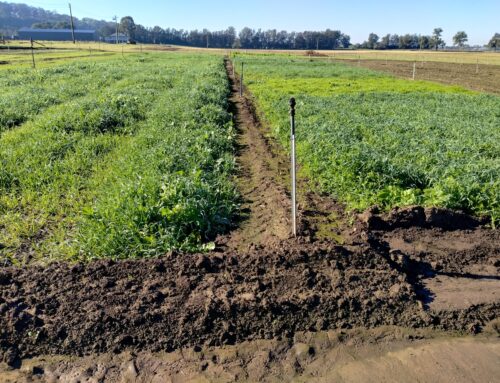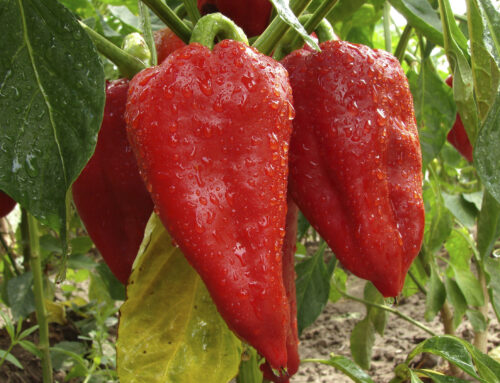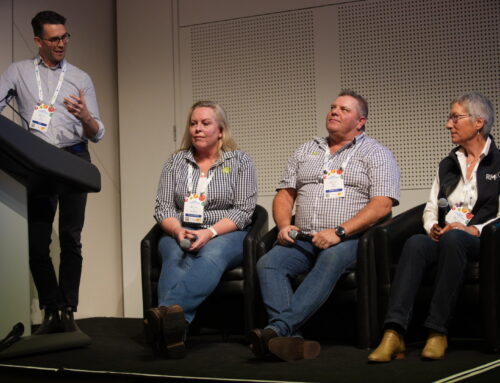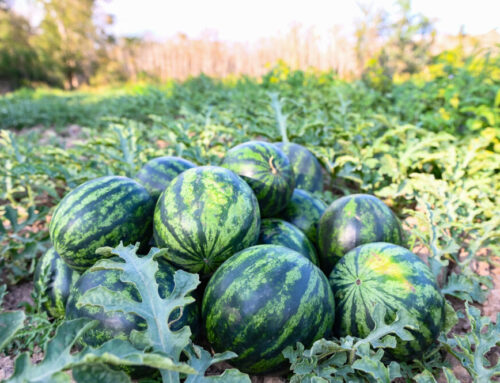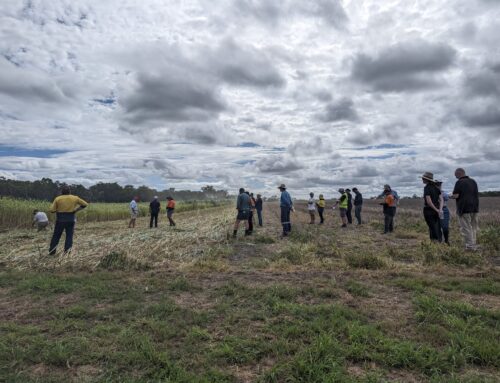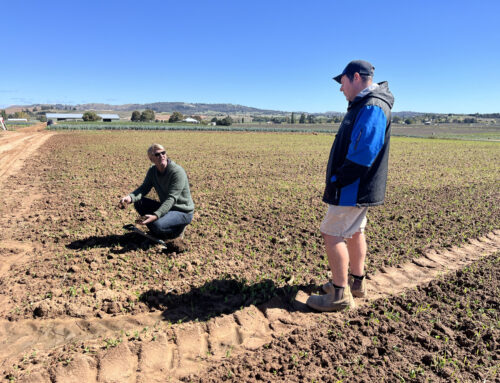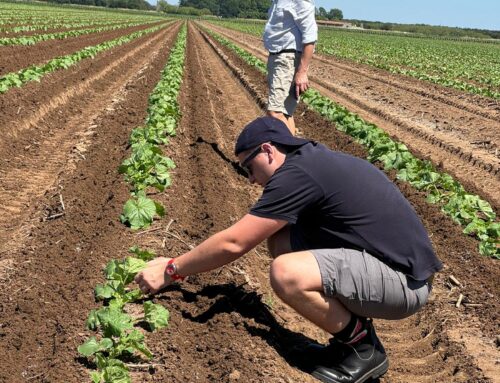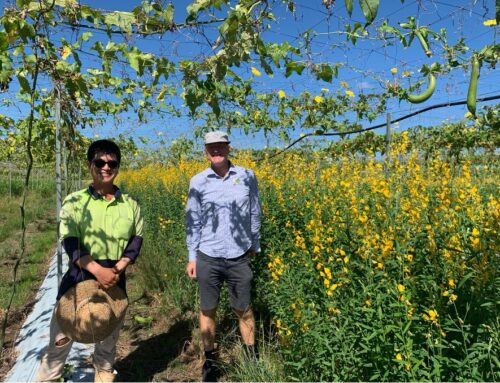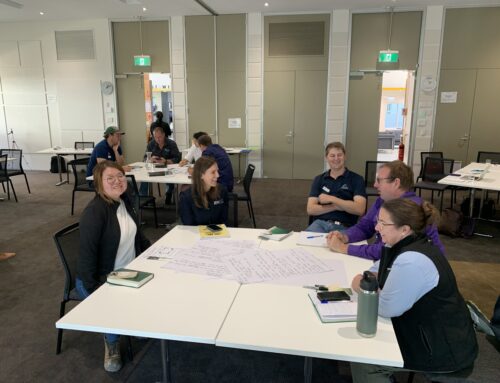On 17 August, a group of vegetable growers and industry members visited Family Fresh Farms in Peats Ridge, New South Wales, for a Soil Wealth ICP event focusing on how growers can incorporate integrated pest management (IPM) in protected cropping systems.
The field day was an opportunity to discuss the fundamentals of IPM and ways for growers to improve their IPM practices.
Family Fresh Farms grower Wade Mann guided participants on a walk through the glasshouse, showcasing how IPM practices in their Qukes® (baby cucumbers) encompass a whole system approach involving monitoring of insect pests and beneficials, plant health, hygiene, biosecurity, climate control, cultural practices and crop protection.
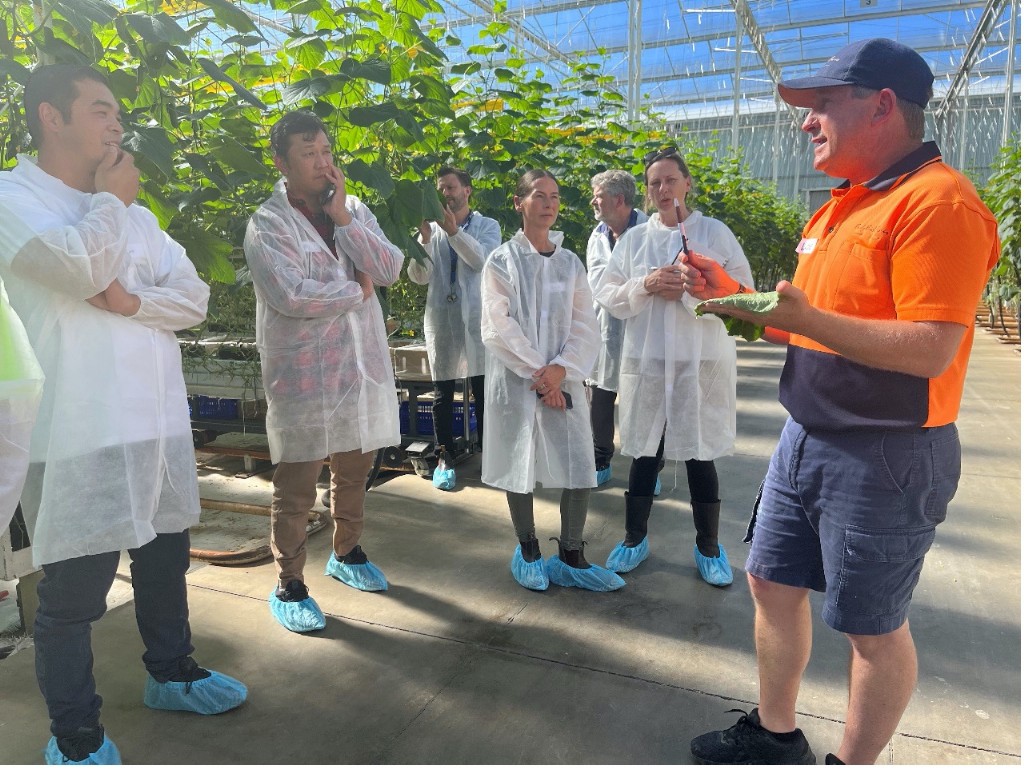
Family Fresh Farms Senior Grower Wade Mann (right) discusses their approach to integrated pest management (IPM) in the glasshouse with attendees.
The many moving parts to IPM
As demonstrated during the glasshouse walk, Wade believes that farm hygiene is critical to support IPM practices. At Family Fresh Farms, it applies to glasshouse equipment such as trolleys, scissor lifts, irrigation drippers, gutters and pipes; general areas of the glasshouse including walkways, the floor under the crop and windows; and activities such as removing waste plant material from the glasshouse.
Any person in the glasshouse must also adhere to hygiene and biosecurity practices and wear suitable clothing and personal protective equipment (PPE).
Climate control plays a role in the success of your IPM program and includes managing vents within the glasshouse as well as monitoring external weather conditions. Cultural practices such as deleafing plants to remove older leaves can help with disease management.
While crop protection products can still be used in an IPM system, consideration needs to be given to their application. Wade explained that it is necessary to be targeted and selective when applying these products, and consider spraying affected areas rather than the entire crop. Wade added that it was important to “hold your nerve” and always revisit the crop conditions before spraying again. Keeping robust spray records can assist in monitoring effectiveness and adhering to withholding periods.
Know your pests to select your beneficials
Following the glasshouse visit, participants observed hands-on demonstrations to learn about key tools, principles and activities that can be applied to ensure IPM practices are effective in various protected cropping environments. Wade also shared further information on the fundamental IPM principles adopted at Family Fresh Farms.
He explained that regular and active monitoring in different areas of a glasshouse underscores the success of an IPM program. It’s important to keep an eye on the presence of pests and beneficial species and their populations, as well as any plant symptoms.
Specifically, growers need to know their pests including their lifecycle, growth habits, damage they cause to plants, sources and transmission of diseases. Being aware of their preferred environments and feeding habits can help growers know where to look for them in greenhouses.
Knowing your pests will also help you to identify the most effective predators to use against them. To increase the effectiveness of biologicals, Wade recommended checking activity of beneficials before releasing and consider releasing them early and regularly into the crop. The best approach to releasing beneficials will depend on the type of predator you are using. You should also consider the storage needs of the beneficials when you receive them and before releasing them into the crop. This will ensure they are most effective in controlling the relevant pest.
Collecting and graphing data of pests and their specific locations within the greenhouse can help to monitor and record populations over time to assess if levels are approaching your threshold. Sticky traps can also be used to collect data and monitor crops, while tools such as a hand lens and industry resources can assist growers to accurately identify pests and beneficials. Training can be considered to improve the knowledge of growers and their staff.
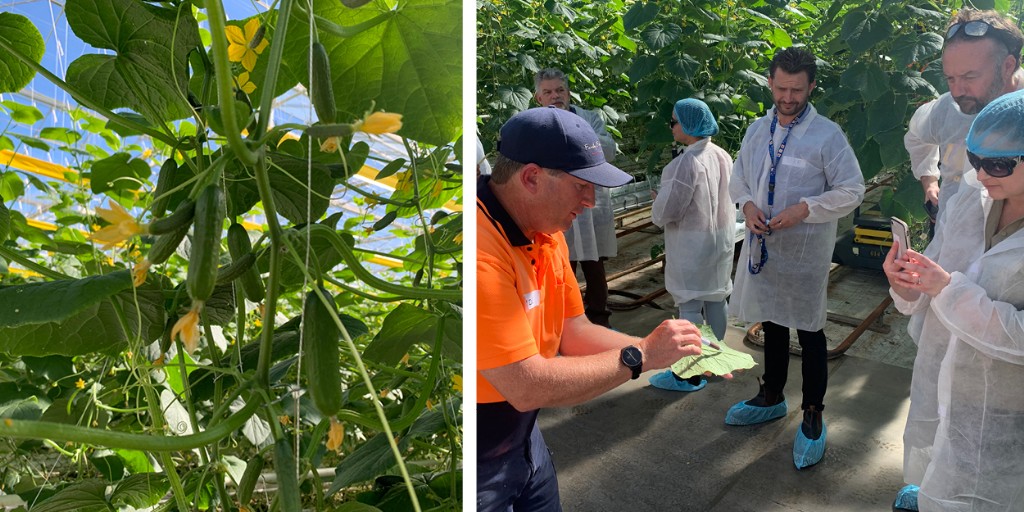
L: A crop of Baby Qukes. R: Wade holds a leaf from the Baby Qukes crop to show the impact of a beneficial predator on aphid pests (mummified aphids).
Following the discussion and demonstrations, growers were able to connect with IPM experts and network with other participants and industry members over lunch.
The Soil Wealth ICP team would like to thank Wade and Nicky Mann at Family Fresh Farms for hosting the event. We also acknowledge NSW Local Land Services, Protected Cropping Australia, Andy Ryland from IPM Consulting and Jake Byrne from Biological Services for their support.
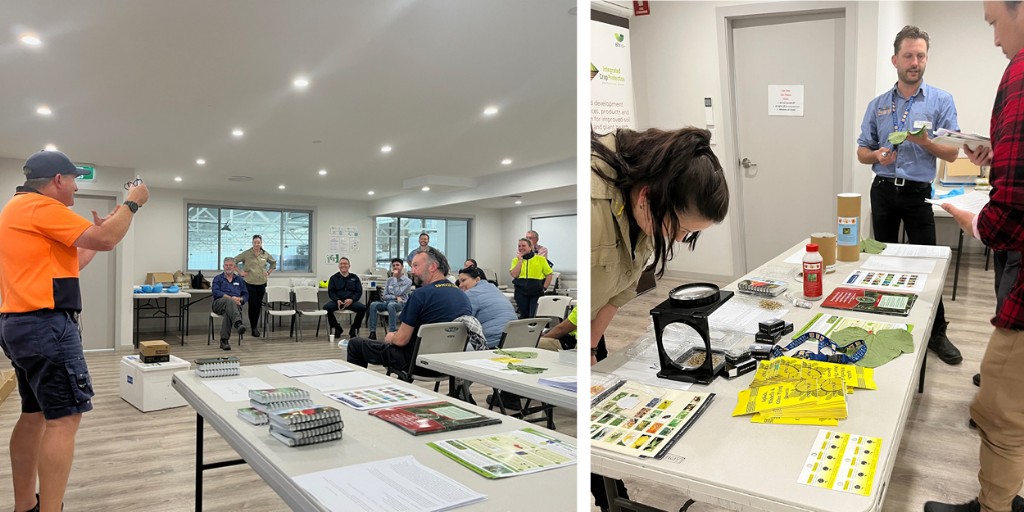
L: Wade summarising the fundamental principles of IPM to participants. R: NSW Local Land Services representative Sylvia Jelinek (left) observes beneficials under a free-standing magnifying glass with grower participants and Biological Services representative Jake Byrne (centre).
More information

